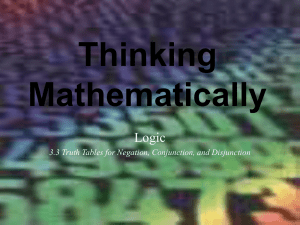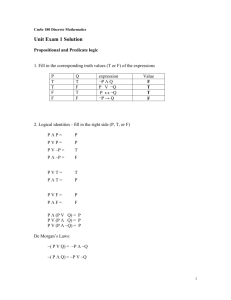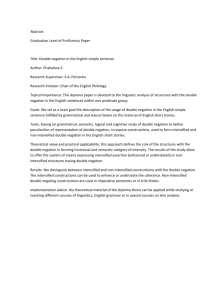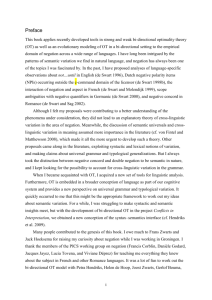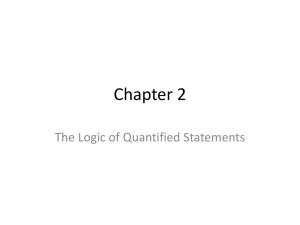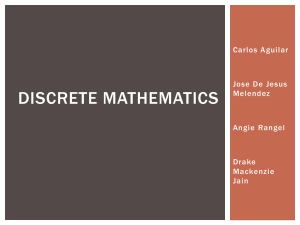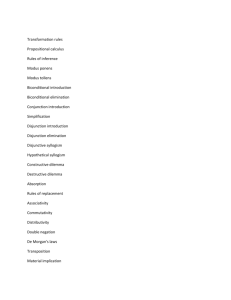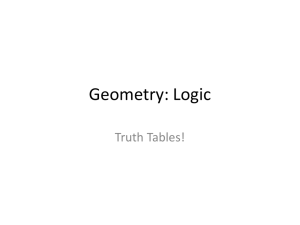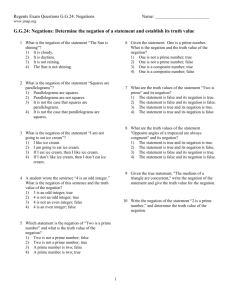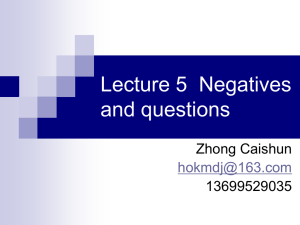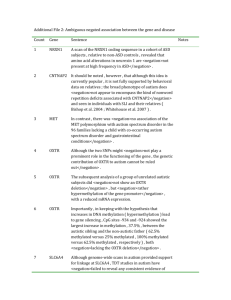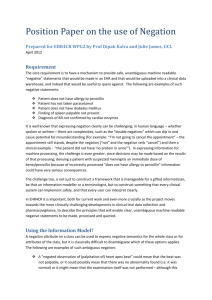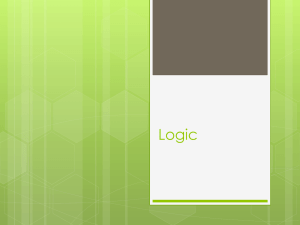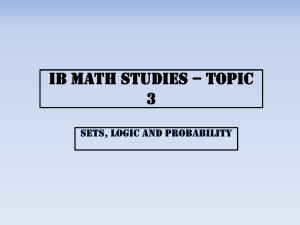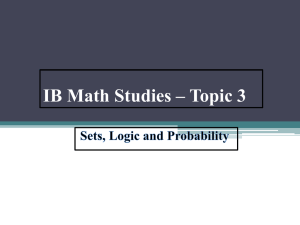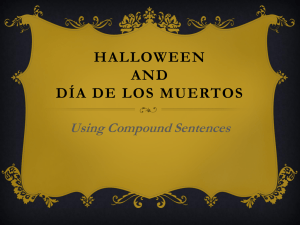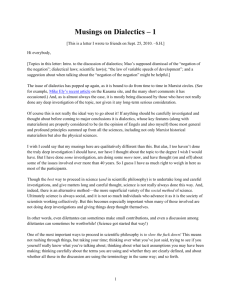ppt
advertisement
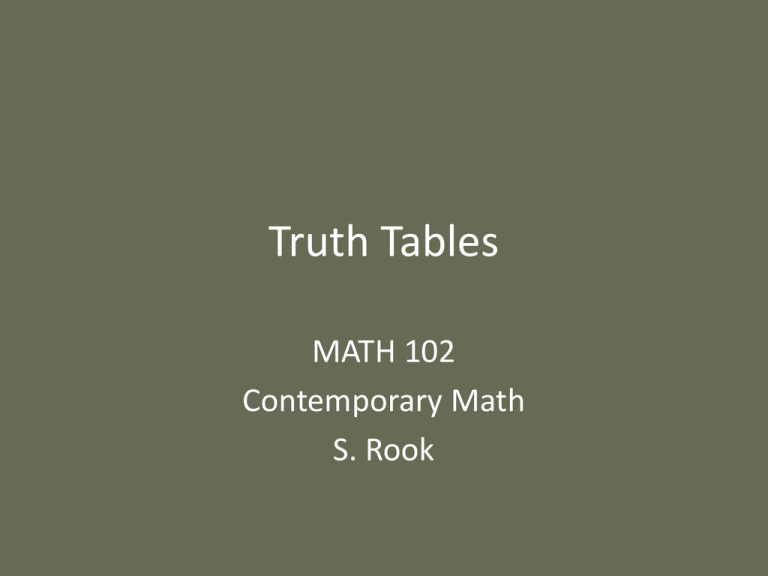
Truth Tables MATH 102 Contemporary Math S. Rook Overview • Section 3.2 in the textbook: – Listing all truth possibilities – Truth tables for negation & connectives – Evaluating compound statements – Logically equivalent statements Listing All Truth Possibilities Listing All Truth Possibilities • Consider a statement p – What are the only possible truth values of p? • Consider statements p and q – We know the possible truth values of p and q separately – What are all the possible truth values if we pick a value for p and then pick a value for q? • What are all the possible truth values for statements p, q, and r? • Notice the pattern? Listing All Truth Possibilities (Continued) • There will be 2k total possibilities for k statements – Need to account for all possibilities – Use the half-and-half method to capture all possibilities – Populating the truth table with all possible truth values of the variables is very important to master! • You must be able to work with a truth table containing up to 3 variables Truth Tables for Negation & Connectives Truth Tables • Truth table: systematic way of determining the truth values of a compound statement by examining all the possible truth values of its input statements – We looked extensively on populating a truth table with input values • The goal for now is to be able to construct a truth table to show the possible truth values for ANY compound statement – Later, we will see how to use truth tables to make logical inferences • Need to first understand the truth tables for negation and connectives Truth Table for Negation • Consider the statement 2 + 1 = 3 – Is the statement true or false? What about its negation? • Consider the statement 8 – 5 = 2 – Is the statement true or false? What about its negation? • Negation: If a statement is true, then its negation is false; if a statement is false, then its negation is true p ~p T F F T Truth Table for Conjunction • Let p be the statement I need to buy bread and q be the statement I need to buy milk – What is the statement p q in English? – What does it mean for p q to be true? • Conjunction: True when ALL variables are true; false otherwise p q pq T T T T F F F T F F F F Truth Table for Disjunction • Let p be the statement I washed the cat and q be the statement I put my shoes on – What is the statement p v q in English? – What does it mean for p v q to be true? • Disjunction: True when at least one variable is true; false when all variables are false p q pvq T T T T F T F T T F F F Inclusive Or vs Exclusive Or • The disjunction defined on the last slide is the inclusive or – Version used in logic • Different from the normally used exclusive or – i.e. One or the other, but NOT BOTH – e.g. If a waitress asks you whether you want Coke or Sprite, what does she expect you to say? • When you see the word or in this chapter, we are referring to the inclusive or Truth Tables (Example) Ex 1: Create a truth table for the following statements: a) p q r b) p q r Evaluating Compound Statements Evaluating Compound Statements • Consider evaluating the compound statement ~ p q ~ q • How many variables are there? – We know how to construct all possible inputs for a truth table • Recall the Order of Operations in Algebra – Similar construct in logic: • Parentheses • Negation • Conjunction & Disjunction Evaluating Compound Statements (Continued) • Evaluate one negation or one connective per column – What should we evaluate first in the example? • Take ONE STEP at a time and keep adding columns to the truth table until you arrive at the desired statement – Reduces the number of columns under consideration in each step to 2 or even 1 which is much easier! • Requires practice in order to master! Evaluating Compound Statements (Example) Ex 2: Construct a truth table: a) ~ p q ~ p q b) p ~ q ~ r Logically Equivalent Statements Logically Equivalent Statements • We say that two statements are logically equivalent if their truth values match exactly – Useful to test whether two statements logically mean the same thing – Use a truth table • DeMorgan’s Laws deal with distributing a negation through parentheses to create a logically equivalent statement ~ p q ~ p ~ q ~ p q ~ p ~ q Logically Equivalent Statements (Example) Ex 3: Determine whether the pairs of statements are logically equivalent: a) ~ ~ p ~ q ; p q b) p ~ q ~ r ; p ~ q p ~ r Summary • After studying these slides, you should know how to do the following: – Populate a truth table with all combinations of truth values of the inputs – Know the truth tables for negation, conjunction, and disjunction – Evaluate a compound statement using a truth table – Determine whether pairs of statements are logically equivalent • Additional Practice: – See the list of suggested problems for 3.2 • Next Lesson: – The Conditional & Biconditional (Section 3.3)

